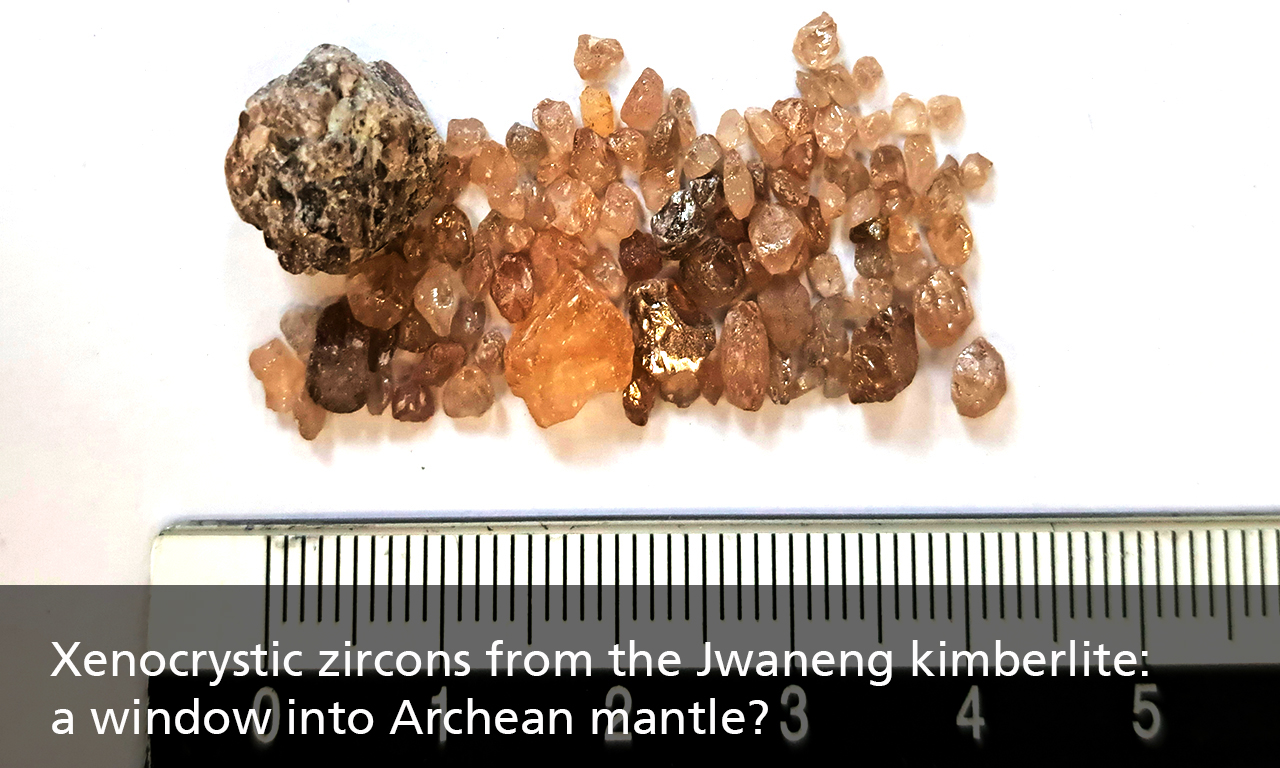
Zircon is a robust recorder of magmatic processes and its occurrence in kimberlites offers the opportunity to study deep mantle processes. The Jwaneng kimberlite (Botswana) contains a young kimberlite-related zircon population as well as an older population with Paleoproterozoic-Archean ages. For the older population it is unclear whether these zircons were formed at 3.2-3.6 Ga (Hf model age) with Pb retention between 2.8 and 2.1 Ga, or were formed between 2.8 and 2.1 Ga with an inherited older Hf component. This project will consist of a comprehensive study on a larger number of zircons with the aim to determine the process responsible for zircon formation by i) a detailed description of the zircons for their morphology, colour, and growth structure (CL imaging), ii) trace element analysis of each sub-population (LA-ICP-MS), iii) U-Pb geochronology (via LA-ICP-MS).
Time permitting, Lu-Hf could be set up for in-situ LA-MC-ICP-MS analyses or Lu-Hf isotope systematics of a smaller selection of homogeneous zircon growth zones could be obtained via dissolution, column chemistry, and MC-ICP-MS analyses.
Advisors: Prof. Suzette Timmerman, Prof. Daniela Rubatto
University: BE
Proposal:
Xenocrystic zircons from the Jwaneng kimberlite: a window into Archean mantle?